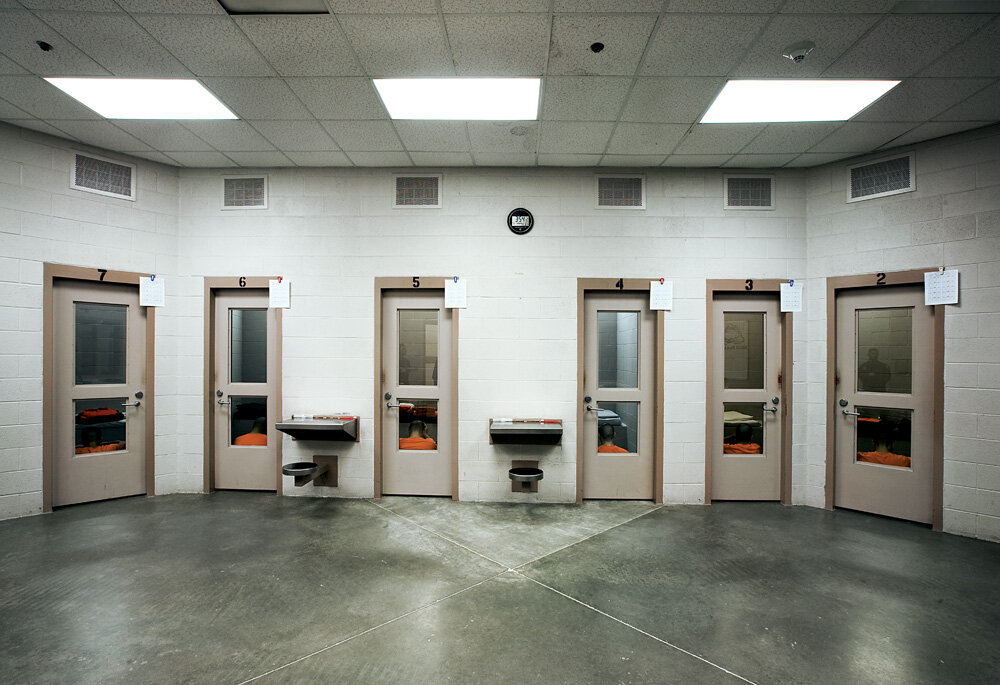Dan Martinez
This pandemic has proved challenging, isolating, and seemingly never ending. Most of us are confined to our homes, or at least seriously limited in whom amongst our loved ones we can see and when we can see them. Most of us still sleep in our own bed and see our family or loved ones with whom we live. We can connect with friends and family outside of our household via video chat or at a distance. Many of us can work from home or attend school via Zoom, too. For incarcerated kids, however, it’s not that simple.
Juvenile detention is lonely and isolating as it is; kids are separated from their support systems (families, friends, teachers, community members) and thrown into an entirely new environment, sometimes facing months to years of confinement. The COVID-19 Pandemic has only exaggerated these circumstances, further cutting kids off from people they love. They are effectively isolated from everyone (except corrections officers) all while their lives hang in the balance as they fear contracting a possibly deadly virus. States have restricted or entirely eliminated visitation from family and legal counsel, some even cancelling their education programs in the facilities too.
It seems that the only way to curb the spread of COVID and effectively quarantine within a correctional facility is isolation, which is basically solitary confinement, a practice that has been prohibited for kids in many states and by international human rights standards. The United Nations Guidelines for the Prevention of Juvenile Delinquency consider placing kids in solitary confinement “cruel, inhumane, [and] degrading.” A proposed ban in the UN highlights solitary confinement as “an affront to the humanity and vulnerability of any child,” according to the ACLU. And yet, the Marshall Project reports that some teens are in isolation for as much as 23 hours a day, reporting that the pandemic is making juvenile facilities look eerily similar to adult prisons.
Despite these restrictions, there were nearly 3500 COVID-19 cases in juvenile detention facilities as of December 2020- or, 3500 that we know of, rather.
41 states plus DC, Guam, and Puerto Rico have reported COVID-19 cases among detained youth, according to the Sentencing Project. It seems that many facilities (particularly privately managed ones) are reluctant to share information regarding the spread of COVID-19 in their facilities. This means we may not even know the full extent to which kids are being exposed to the coronavirus while incarcerated. Plus, higher case numbers in a given jurisdiction may be indicative of more aggressive testing when compared to states that either aren’t testing as many kids or aren’t publicly sharing the number of cases. This begs the question: what does this mean for states with low numbers? It’s not unlikely that state’s with less reported cases may just not be testing as many kids in detention. How many cases are going unreported, untreated?
This has been an issue since the start of the year-long (and counting) global health crisis. In April 2020, early on in the pandemic, the Bon Air Juvenile Correctional Center outside Richmond, VA, had the worst known outbreak of COVID-19 in a youth correctional facility. At the time, 25% of publicly reported cases at youth facilities were reported at this single facility. Kids inside were “reporting chaos,” according to Rachael Dean, legal director of the JustChildren Program at VA’s Legal Aid Justice Center. Kids were not receiving adequate medical care, testing, or protective gear. Many parents report that they were unable to contact their children and were not notified if/when they tested positive for the virus.To slow the spread, the facility “stopped visitors, suspended schooling, ended counseling and locked at least some teens in their cells 23 hours a day.”
Many incarcerated kids are being held pre-trial, which means they have not been convicted of a crime. Since courts are closed or their functions seriously limited, these kids “must wait even longer, in more psychologically damaging conditions, to argue for their freedom.” Amongst those in detention, about 70% of youth are being held on non-violent offenses, which means that holding these kids in this dangerous situation serves “little, if any, public safety interest.” This means that they are being held in isolation merely because they are suspected of a crime. They are not receiving typical rehabilitative services or sufficient education. They are alone, fearing for their lives, and for what?
“Does anyone believe that rehabilitation can occur in a locked facility during a pandemic?” If not, “what are we actually doing still holding children in these facilities?”
The Sentencing Project argues that the only way to reduce exposure to the virus and mitigate the spread is to reduce the number of incarcerated youth. Jurisdictions such as Clayton County, GA, and Fresno County, CA, are releasing kids from their facilities. As of May 2020, following the height of the first wave of the pandemic, only 10 states had taken steps at the state level to reduce the number of incarcerated children. Not only will doing so materially limit the number of kids exposed to COVID in juvenile facilities, but it will ensure that kids are not locked up unnecessarily, completely isolated from their loved ones and others within the facility, fearing for their lives day in and day out, alone.
It’s easy to throw up our hands and say “well, what are we supposed to do? Isolation is the only option for these kids.” But when we consider the emotional, intellectual, and physical toll these conditions are taking on these kids, many of whom are neither convicted nor violent, the only option is decarceration. It is releasing kids to their families (especially, but not exclusively, kids awaiting trial) and significantly reducing the incarcerated youth population in all states. It is ensuring that these kids have a support system and an education during this stressful period in our history and their lives specifically.



